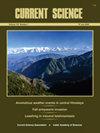经无线电灭菌的斜纹夜蛾(Spodoptera litura, Fabr.)是活体昆虫病原线虫在体内安全运输的有利宿主,嗜热斯坦纳姆(steinerma thermoophilum)是潜在的拟寄生虫
IF 1
4区 综合性期刊
Q3 MULTIDISCIPLINARY SCIENCES
引用次数: 0
摘要
研究人员确定了一种已确定的夜间害虫——斜纹夜蛾(Spodoptera litura, Fabr.)——经无线电消毒后的寄主在体内运输可存活的昆虫病原线虫(EPNs)——嗜热斯坦氏线虫(Steinernema thermoophilum)的潜力。对宿主(害虫)进行放射性灭菌(70 Gy),以避免宿主幼虫可能无意中错过EPN感染的任何害虫种群积累。寄主经放射性灭菌后的侵染幼虫(IJs)在67.3 h诱导寄主死亡,132 h孵育,87.8%的寄主被寄生,每mg寄主体重量收获98.9只IJs,表明这些IJs的寄生行为与对照几乎相似。研究结果表明,经放射性消毒的斜纹夜蛾寄主适合以安全的方式携带IJs(体内),可以保留相当程度的传染性,以便在野外利用生物防治措施管理这一严重的夜间害虫。本文章由计算机程序翻译,如有差异,请以英文原文为准。
Radio-sterilized Spodoptera litura (Fabr.) as a conducive host for in vivo safe transport of viable entomopathogenic nematodes, Steinernema thermophilum as potential parasitoids
The potential of a radio-sterilized host, Spodoptera litura (Fabr.), an established noctuid pest, was ascertained for in vivo transport of the viable entomopathogenic nematodes (EPNs), Steinernema thermophilum . Radio-sterilization (70 Gy) of the host (pest) was done to avoid any pest population build-up from the host larvae that could inadvertently miss EPN infection. The infective juveniles (IJs) derived from a radio-sterilized host took 67.3 h to induce host mortality, 132 h for incubation, and showed 87.8% parasitization with 98.9 IJs harvesting per mg host body wt, indicating almost similar parasitizing behaviour of these IJs as control. The findings indicated the suitability of the radio-sterilized host, S. litura , for carrying the IJs ( in vivo ) in a safe mode, that could retain a substantial degree of infectivity to be utilized in the field for managing this serious noctuid pest using biocontrol measures.
求助全文
通过发布文献求助,成功后即可免费获取论文全文。
去求助
来源期刊

Current Science
综合性期刊-综合性期刊
CiteScore
1.50
自引率
10.00%
发文量
97
审稿时长
3 months
期刊介绍:
Current Science, published every fortnight by the Association, in collaboration with the Indian Academy of Sciences, is the leading interdisciplinary science journal from India. It was started in 1932 by the then stalwarts of Indian science such as CV Raman, Birbal Sahni, Meghnad Saha, Martin Foster and S.S. Bhatnagar. In 2011, the journal completed one hundred volumes. The journal is intended as a medium for communication and discussion of important issues that concern science and scientific activities. Besides full length research articles and shorter research communications, the journal publishes review articles, scientific correspondence and commentaries, news and views, comments on recently published research papers, opinions on scientific activity, articles on universities, Indian laboratories and institutions, interviews with scientists, personal information, book reviews, etc. It is also a forum to discuss issues and problems faced by science and scientists and an effective medium of interaction among scientists in the country and abroad. Current Science is read by a large community of scientists and the circulation has been continuously going up.
Current Science publishes special sections on diverse and topical themes of interest and this has served as a platform for the scientific fraternity to get their work acknowledged and highlighted. Some of the special sections that have been well received in the recent past include remote sensing, waves and symmetry, seismology in India, nanomaterials, AIDS, Alzheimer''s disease, molecular biology of ageing, cancer, cardiovascular diseases, Indian monsoon, water, transport, and mountain weather forecasting in India, to name a few. Contributions to these special issues ‘which receive widespread attention’ are from leading scientists in India and abroad.
 求助内容:
求助内容: 应助结果提醒方式:
应助结果提醒方式:


